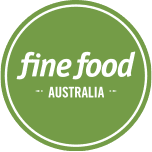While Australia remains one of the world’s great consumers of meat – about 110kg per person a year, compared to a global average of 44kg – our tastes are changing.
There was a time when beef was the king of meat, but beef consumption in Australia has dropped by 41 per cent since 2000, just behind lamb, which has plummeted by almost 50 per cent. Meanwhile, we’re eating more chicken and pork.
For butchers across the country, this changing landscape presents an opportunity to pivot, and to look at ways of staying relevant.
Alison Meagher, a qualified butcher and educator, has been travelling through China and South-East Asia for the past six years as an ambassador for the Australian meat industry and has returned home to share her insights with local butchers and chefs.
Based near Warrnambool, Victoria, she recently launched Butcher Girl, and is on a mission to help butchers understand how to grow their business, increase profits and stay viable. She’s particularly focused on the possibilities of beef, beyond the common prime cuts.
“It’s been good to come back to Australia and see what’s going on in the industry, especially the butcher shops,” Meagher says. “I’ve noticed that the price of beef is very high and the average consumer doesn’t know about cuts apart from the prime cuts. And, to be completely honest, I don’t think most of the butchers know about these either. Many of them throw most of the secondary cuts into the mincer because that’s what they’ve always done.”
By secondary cuts, Meagher is referring to those usually used in slow cooking, such as oyster blade, flank and skirt. Instead of mincing these, and other cuts that commonly end up in sausages, she believes we should be educating customers on their qualities and showing how they can be turned into many different dishes.
Explains Meagher: “I’ve said to many butchers, ‘You know, this is the skirt, the inside skirt, the outside skirt, the palm skirt’ and they just say, ‘It’s all just mince to me.’ But you look at something like an oyster blade, for example. Most people slow-cook it. But what you can do is remove that sinew in the middle and you can make flat iron steaks, which then become the second most tender muscle in the whole animal, the first being the tenderloin.
“I think butchers could benefit from knowing more about the cuts of the animal, which is only going to help their business grow.”
Top to tail meat in fashion
For butcher Grant Hilliard, using the whole animal is essential to his business Feather and Bone in Sydney’s Marrickville. He says Feather and Bone, unlike many butchers who rely exclusively or substantially on boxed meat, only buys carcass meat or meat on the bone.
“We buy directly from producers,” he says. “We don’t deal with wholesalers and we visit every farm that we source from. So it’s a very, very different way of running a butcher shop.”
Like Meagher, Hilliard promotes using the whole animal. He says: “If you’re only looking at prime cuts, you’re doing both the animal and the production process a disservice. We believe that if you’re going to eat meat then you have to account for the whole animal – so we buy the whole animal. Then we can verify that it will meet our ethical framework for livestock management and environmental management.”
Hilliard has been running Feather and Bone for 15 years and has built up a strong customer base that he says is prepared to pay more for the value of nutritionally high meat.
“We find that just because some cuts are more expensive than our customers may be used to, they may consider other cuts – so-called lesser or secondary cuts – and they will recognise the quality of the meat and that it is tremendously flavoursome and rewarding. It’s taken us a while to build that diverse audience for all the different parts of the carcass.”
Instead of promoting more meat consumption, Hilliard argues that eating less meat, but with a higher nutritional content, is part of the solution to keeping butchery viable.
“By working with farmers who are focused on soil fertility, we’re also working with produce that has as high a nutritional content as possible,” he says. “And if it’s high nutritional content, you don’t need as much of it. So we’re talking about less quantity but higher quality. I try and convince people that what they eat matters – for the environment’s health and ultimately for theirs as well.”
Hilliard is the co-author of The Ethical Omnivore, a book promoting the importance of regenerative agriculture and community, and he is passionate about helping people better understand how we can live with less impact on both animals and the environment.
“We’re very interested in the educational process that allows people to see the benefits of those things and why it might be important from a personal level, but also on a social and environmental level, too,” he adds.

